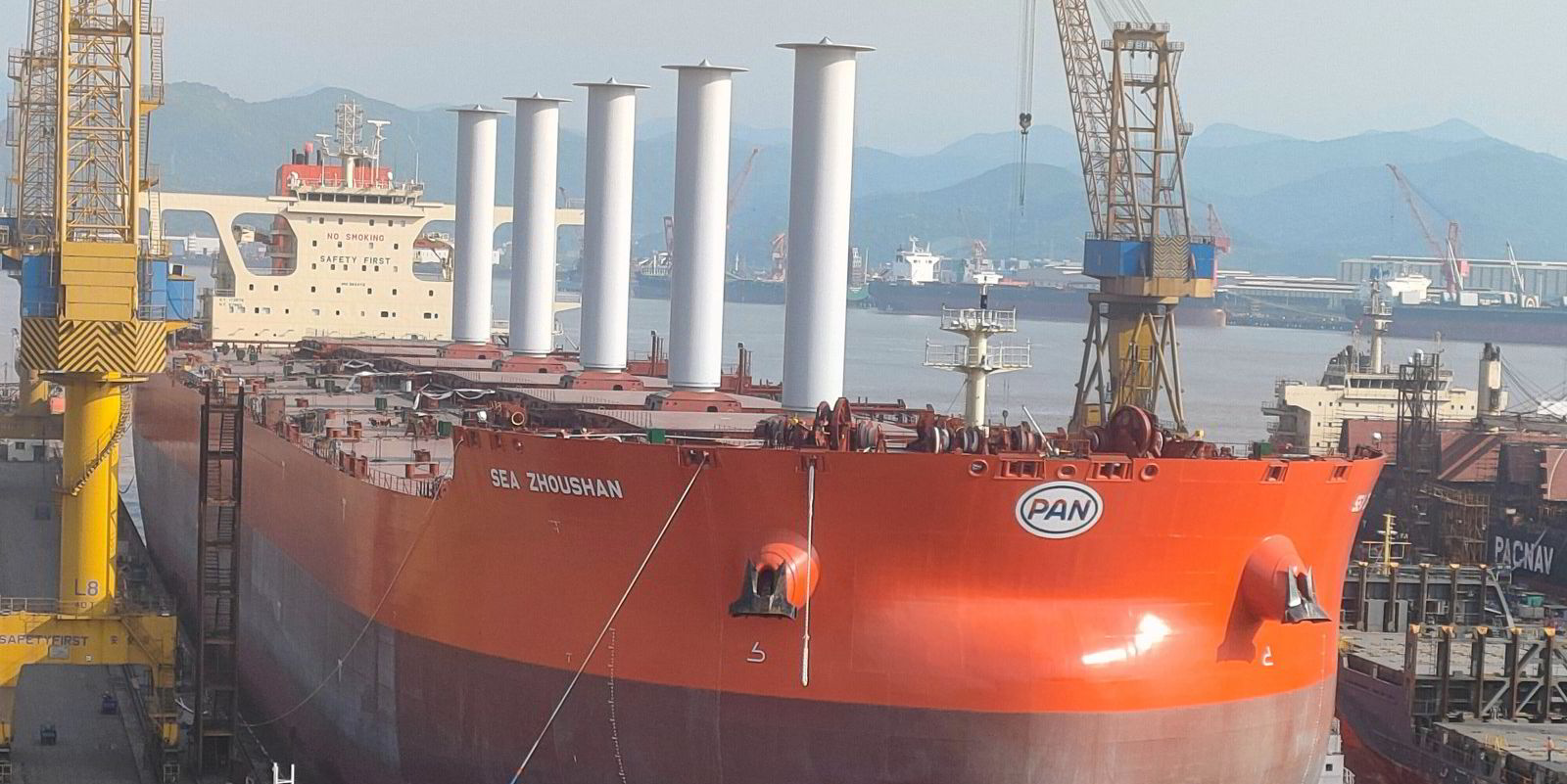Vale has launched an effort that could result in the construction of methanol-fuelled very large ore carriers loaded with energy efficiency technologies that include rotor sails.
The Brazilian mining giant told TradeWinds that it launched a request for proposals for contracts of affreightment for a new generation of its Guaibamax vessels.
The 325,000-dwt vessels will be able to run on both methanol and conventional marine fuels.
Vale described the effort as “part of an innovative project to increase the flexibility of its fleet and to foster GHG [greenhouse gas] emissions reduction solutions”.
The Rio de Janeiro company, which is the world’s largest miner of iron ore, did not reveal the number of vessels it is seeking. Shipping technical manager Rodrigo Bermelho told TradeWinds that the COAs will last 25 years.
Vale said the dual-fuel ships will bring together the best results of its Ecoshipping programme, a research-and-development initiative by the company’s shipping division to cut carbon emissions in line with International Maritime Organization targets.
The new Guaibamaxes will have many of the efficiency technologies explored in the programme, including five rotor sails on each vessel.
Altogether, the vessels will be able to reduce greenhouse gas emissions by 23% compared to the Guaibamax vessels on the water today, when measured on a tank-to-wake basis.
Methanol is gaining ground as an alternative shipping fuel because it can reduce tank-to-wake emissions today and offers the potential of a zero-emissions fuel on a well-to-wake basis if produced using carbon capture and green hydrogen.
But Vale has made provisions in its request for proposals for a different fuel mix in the future.
“As part of a multi-fuel future-ready strategy, the vessel is also designed for possible retrofit of tanks to carry LNG and ammonia,” said the company, whose shares are listed in Sao Paulo and New York.
As part of the Ecoshipping effort, Vale secured approval-in-principle from classification society DNV for a multi-fuel tank system on iron ore carriers that paved the way for that multi-fuel approach.

The system was developed in conjunction with Brevik Engineering and Passer Marine to allow the tanks to be adapted to LNG, methanol or ammonia.
When it announced the approval-in-principle in June, Vale said the project information found that methanol and ammonia emissions reductions could be as large as 40% to 80%, compared to 23% with LNG.
Vale’s decarbonisation journey for its VLOC fleet also involved equipping the first ore carrier with rotor sails and installing an air lubrication system on a Guaibamax ship.
Read more
- Green Seas explainer: Tracking the moving parts in the IMO carbon jigsaw
- ‘Finally happening’: IMO makes progress in teeing up historic carbon decisions in July
- Green Seas: Why some nations oppose more ambitious carbon targets for shipping
- Green Seas: Scrubbers face questions as sulphur cap approaches three-year mark
- ‘Here we are once again’: Marshall Islands disappointed that IMO won’t adopt zero-carbon goal now



